Apogee Instruments SB-100 is a high-quality barometric pressure sensor, designed for continuous barometric pressure measurement when housed inside the same enclosure as the measurement device (e.g., datalogger or controller). It is weather-resistant and has a long-term drift of less than 1% per year, making it a reliable and accurate choice for long-term monitoring applications. The SB-100 has a measurement range of 15 to 115 kPa, a sensitivity of 45.9 mV per kPa, and a measurement uncertainty of ±1.5 kPa. It outputs an analog voltage that is directly proportional to barometric pressure.
Apogee Instruments SB-100 is a high-quality barometric pressure sensor, designed for continuous barometric pressure measurement when housed inside the same enclosure as the measurement device (e.g., datalogger or controller). It is weather-resistant and has a long-term drift of less than 1% per year, making it a reliable and accurate choice for long-term monitoring applications. The SB-100 has a measurement range of 15 to 115 kPa, a sensitivity of 45.9 mV per kPa, and a measurement uncertainty of ±1.5 kPa. It outputs an analog voltage that is directly proportional to barometric pressure.















-
 1
1
-
 2
2
-
 3
3
-
 4
4
-
 5
5
-
 6
6
-
 7
7
-
 8
8
-
 9
9
-
 10
10
-
 11
11
-
 12
12
-
 13
13
-
 14
14
-
 15
15
Apogee Instruments SB-100 is a high-quality barometric pressure sensor, designed for continuous barometric pressure measurement when housed inside the same enclosure as the measurement device (e.g., datalogger or controller). It is weather-resistant and has a long-term drift of less than 1% per year, making it a reliable and accurate choice for long-term monitoring applications. The SB-100 has a measurement range of 15 to 115 kPa, a sensitivity of 45.9 mV per kPa, and a measurement uncertainty of ±1.5 kPa. It outputs an analog voltage that is directly proportional to barometric pressure.
Ask a question and I''ll find the answer in the document
Finding information in a document is now easier with AI
Related papers
-
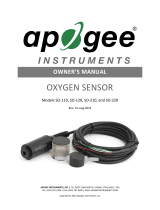 apogee INSTRUMENTS SO-120 Owner's manual
apogee INSTRUMENTS SO-120 Owner's manual
-
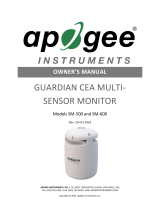 apogee INSTRUMENTS SM-600 Owner's manual
apogee INSTRUMENTS SM-600 Owner's manual
-
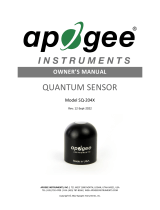 apogee INSTRUMENTS SQ-204X-SS Owner's manual
apogee INSTRUMENTS SQ-204X-SS Owner's manual
-
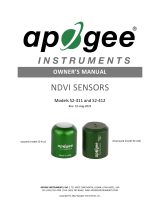 apogee INSTRUMENTS S2-411-SS Owner's manual
apogee INSTRUMENTS S2-411-SS Owner's manual
-
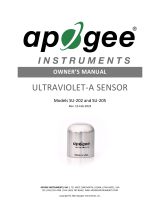 apogee INSTRUMENTS SU-202-SS Owner's manual
apogee INSTRUMENTS SU-202-SS Owner's manual
-
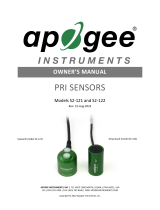 apogee INSTRUMENTS S2-121-SS Owner's manual
apogee INSTRUMENTS S2-121-SS Owner's manual
-
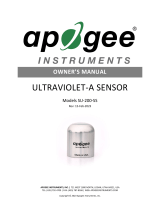 apogee INSTRUMENTS SU-200-SS Owner's manual
apogee INSTRUMENTS SU-200-SS Owner's manual
-
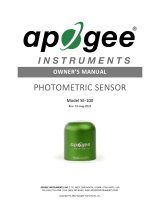 apogee INSTRUMENTS SE-100-SS Owner's manual
apogee INSTRUMENTS SE-100-SS Owner's manual
-
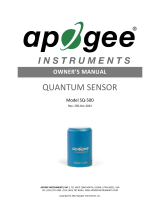 apogee INSTRUMENTS SQ-500-SS Owner's manual
apogee INSTRUMENTS SQ-500-SS Owner's manual
-
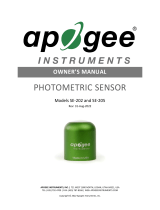 apogee INSTRUMENTS SE-202-SS Owner's manual
apogee INSTRUMENTS SE-202-SS Owner's manual
Other documents
-
Apogee SB-100 Owner's manual
-
Apogee SO-421 User manual
-
Apogee SO-220 User manual
-
Apogee SO-110 Owner's manual
-
Apogee MO-200 Owner's manual
-
Apogee EE08-SS Owner's manual
-
Apogee EE08-SS PROBE Relative Humidity Owner's manual
-
Apogee SQ-614 Owner's manual
-
Apogee SQ-614 Owner's manual
-
apogee INSTRUMENT SQ-100X Series Owner's manual
























